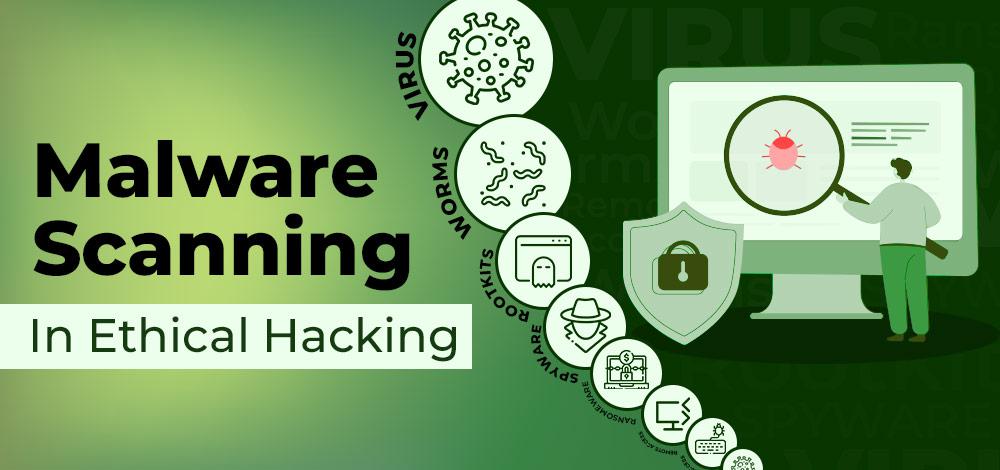The concept of malware scanners has changed in ethical hacking. It can be a mission to discover that an organization is suffering from malware if you use an old scanner. This may not tell you much about the security of the organization because they could have just been picked up by antivirus companies and deemed safe. Having a good grasp of new methods such as mobile vulnerability scanners, cloud vulnerability scanners, and various scanning algorithms will help in finding out what’s what for the client or company you are working with.

Malware Scanner:
In general, any software is used to test for potential threats in computer systems. Malware is software designed to cause harm, and often it is designed to steal information. Malware may also try to steal passwords, perform system attacks, or spread from device to device. It usually hides from antivirus systems and such, and cannot be deleted by antivirus programs because of frequent changes, and that’s why you need an efficient scanner.
There are many free malware scanner applications, but some of them are not up-to-date and are not effective for testing the security of the client’s systems.
Some malicious tools include rootkits, Trojan horses, spyware, keyloggers (keystroke logging), and worms (a virus that spreads without the user’s knowledge).
Types of Malware:
- Riskware – this type of malware infects a computer system when it has access to it and can then be used to abuse, attack, or steal data.
- Rootkit – this type of malware hides in the operating system by modifying critical system files, so that they no longer function properly. If a rootkit is installed on a computer, you are at risk of losing important information such as personal information, passwords, and credit card numbers.
- Spyware – spyware collects vast amounts of information about its users, such as e-mail addresses and websites visited.
- Keylogger – this type of malware captures keystrokes and then sends them to a hacker.
- Worm – this type of malware can spread very quickly between computers by itself. It can replicate itself, opening up multiple avenues of attack to the cyber-criminal.
- System vulnerability scanners-these types of scanners test for vulnerabilities in operating systems and applications that could be exploited by hackers.
Malware scanning is an integral part of a strong security program, but it is only part of the solution; it is not a complete solution on its own. You will still need additional resources such as firewalls and antivirus software to protect your network from attacks.
Key Points:
- A good scanner must be able to identify the ranges of different types of malware, quickly and easily.
- It should be able to differentiate between different types of attacks or threats.
- It should be able to find zero-day exploits, as they are difficult to detect otherwise.
- It must define how many users are affected by the malware attack and how many files have been infected by it on your server, versus your client’s systems or email servers.
- It should have an easy-to-use interface so that novices can use the application easily and be able to create a report for all the infected machines and files and deliver it with ease.
- It should also tell you how the malware is being distributed and be able to prevent it to stop further infection of your network or server, later on, and perform a quick scan and not take long, while still providing accurate results when testing the security of the firm or organization you are working with.
Countermeasures:
- Cloud-based infrastructure – This is the future of IT and cybersecurity because it offers various advantages such as high availability and scalability but always be careful because if an attack on your cloud provider occurs, you will be affected as well.
- Educate your users – Provide online training modules and make sure that they know how to spot a phishing email or a scam website.
- Keep software up-to-date – Keep all operating systems updated with the latest patches and hotfixes, along with browser plug-ins, email server software, and applications such as Flash player or Java.
- Use two-factor authentication – This is one of the best ways of protecting your data and security.
- Use an intrusion detection system – These systems will alert you if someone tries to hack into your network or if any problems need attention.
There have been many cases of malware scans being used to perform a social engineering attack, thereby gaining access to information about the organization being scanned even though their systems were virus free.




